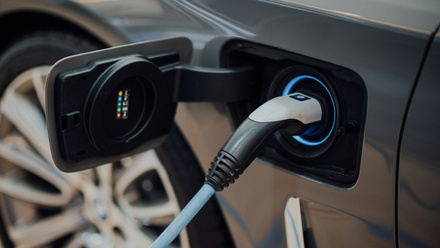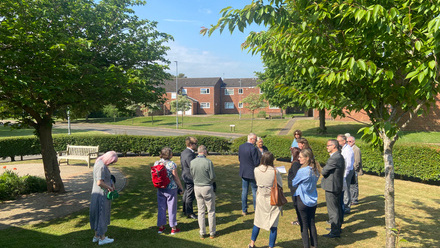Utility Aid: From rising energy costs to net zero goals
Author: Emily Berry, partnership manager at Utility Aid
After a recent webinar led by myself, Emily Berry, Partnership Manager at Utility Aid and hosted by our friends Scribe. I am sharing key takeaways that can support your journey toward greater energy efficiency and net-zero emissions. At Utility Aid, we're passionate about empowering the charity and nonprofit sector to save time and resources through tailored energy solutions. We work closely with councils and other organisations to help navigate everything from energy contract management to carbon reduction planning, all with a focus on sustainability and financial impact.
With rising energy costs and an urgent push towards sustainability, now is a pivotal time for organisations to rethink their energy strategies. Here's a recap of practical steps and insights to help you make a meaningful impact on your energy bills and carbon footprint.
Create a culture of energy-saving
Reducing energy use isn't just about adjusting thermostats or turning off lights. It's about building an organisation-wide culture. Here are a few ways to create lasting change:
- Engage everyone — When everyone knows the "why" behind energy savings, they're more likely to help. Consider appointing an "Energy Champion" who can encourage positive habits across the organisation. This role isn't about policing; it's about fostering a shared responsibility.
- Watch out for phantom energy — Phantom energy, or "ghost" energy, refers to power drawn by devices not in active use. This hidden consumption can add up. Connecting devices to power strips make it easy to shut off unused equipment completely.
- Temperature control — HVAC costs can account for up to 60% of your total energy spend. Agreeing on a comfortable yet conservative temperature range helps reduce the demand for heating and cooling. For example, the Energy Saving Trust recommends maintaining temperatures between 18 °C and 21°C in winter.
- Install Automated Meter Reading (AMR) devices — AMR devices go beyond traditional smart meters by providing real-time data during and outside operational hours. This data can reveal unexpected usage patterns, such as a heater running on a timer overnight when no one uses the building.
- Optimise your energy tariff — Check you are getting value for money. If your tariff has dual rates, it may be prudent to carry out certain tasks during off-peak times.
Your journey to net zero
When we talk about net zero, starting with a clear picture of where you currently stand is essential. This is where a carbon footprint assessment comes in. You'll want to account for emissions from both direct (Scope 1) and indirect sources (Scope 2 and Scope 3). Breaking it down like this can make the journey more manageable:
- Scope 1 — These are the direct emissions you control, like fuel burned for heating or company vehicles.
- Scope 2 — These are the emissions organisations make indirectly – like when the electricity or energy it buys for heating and cooling buildings is being produced on its behalf.
- Scope 3 — In this category go all the emissions associated, not with the organisation itself, but that the organisation is indirectly responsible for, up and down its value chain. For example, it can buy products from its suppliers and from its products when customers use them. Emissions-wise, Scope 3 is nearly always the big one! Tackling Scope 3 can be challenging, so start with the lower-hanging fruit, such as selecting sustainable suppliers and minimising waste in procurement practices.
Read the full and watch the webinar
The following blog post is for informational purposes only and should not be considered professional or legal advice. The views and opinions expressed in this post are those of the author and do not reflect the official policy or position of the National Association of Local Councils. Any links to external sources included in this blog post are provided for convenience and do not constitute endorsement or approval of those websites' content, products, services, or policies. Therefore, readers should use discretion and judgment when applying the information to their circumstances. Finally, this blog post may be updated or revised without notice.






